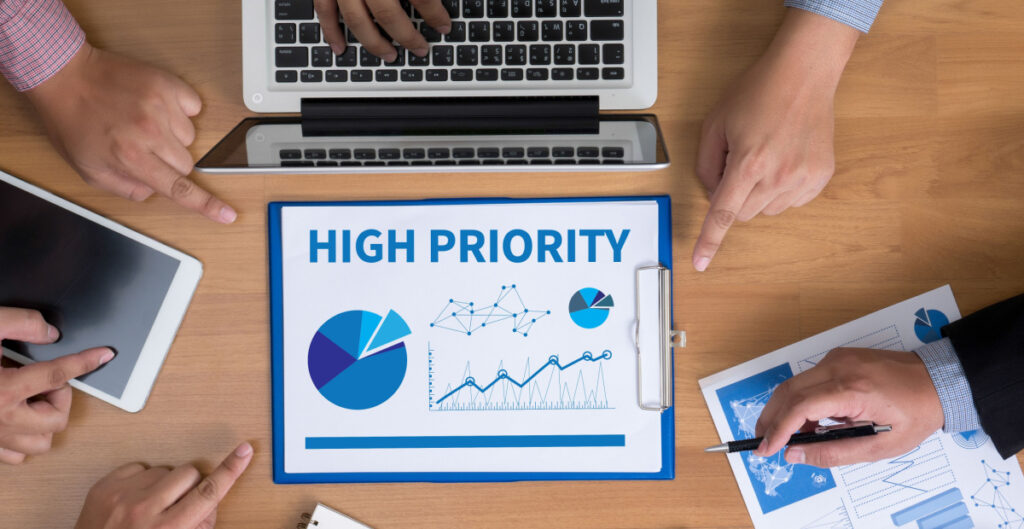“From the Field” is a series of interviews in which water utility operators share their insights and experiences on varied topics.
Hearing from peers in other water utilities is one of the best ways to get new ideas and gain more understanding about issues and trends. In this series of occasional articles, we ask several water professionals to share their thoughts on a particular topic.
This article focuses on what utilities see as their main priorities over the coming couple of years, in general, and particularly related to maintenance.
Insights and experiences shared by:
- Darren Cash, Customer Hub Manager, Sydney Water, Australia
- Francisco Iturriaga, Department Head, Operational Intelligence, Esval & Aquas del Valle, Valparaíso and Coquimbo, Chile
- Nick Goninan, Technical Officer, Non-Revenue Water, Hunter Water, Australia
- Germán Ramos, Operations Manager, Sedapal, Peru
- Rhett Duncan, Executive Manager – Customer Delivery, Unitywater, Queensland, Australia
Answers have been edited for clarity and brevity.
Q: What do you see as your overall top challenge or goal to address in the next one or two years, and why?
Darren, Sydney Water: Our main challenge at the moment is probably to improve our field mobility, and the optimization of our field resources. We’re still planning, scheduling, dispatching work to our field crews in a fairly manual fashion. But there’s a lot of smart automation built into the technology we implemented over the past few years, so there’s lots of opportunity to improve – to reduce repeat work, reduce travel times, increase the number of jobs we can complete per hour.
One of the drivers for this is efficiency. Travel in Sydney is very difficult; any travel between one location and another is almost guaranteed to take an hour. So, if we’re able to better optimize the use of field resources, and optimize routes, that would have a big effect.
The other driver is both employee and customer experience. We want to provide our field employees with everything they need to be able to respond to something for a customer, not just a line item on a work order. If they can see things like how many other interactions that customer had with us, then the customer doesn’t have to repeat information to our field crews. It’s a much better experience for our employees, and also for our customers.
Rhett, Unitywater: We’re an amalgamation of several council businesses where, in the early years, the capturing of records and information was somewhat ad-hoc. That’s changed over the past 10 years or so, but details on some of the older underground assets are largely unknown. There’s a lot of information in people’s heads. So, our challenge for the next few years is how to capture and systemize all that information.
Adding to that challenge, 25% of the field force are aged 55 or over, and we’ve got two employees who are 70. At the moment, their knowledge is largely transferred from head-to-head while we’re out on the job site. So, we’re working on ways to refresh programs to continue the transition of knowledge, and the building of skills, so we don’t have to rely on people remembering to share what they know about what’s under the ground.
Nick, Hunter Water: We’re aiming to get 100% of our network covered by DMAs by 2025. As we do that, one of our goals is to look at including billing data for TaKaDu, and we’re also looking at linking maintenance jobs with TaKaDu events.
Learn more about Cenral Event Management – Contact us
Q: What is your top priority for the next few years in terms of maintenance?
Germán, Sedapal: Having sectorized our network, we have a lot of information about the sectors, pressures, and flows, which is great; but dealing with it manually is quite tedious. I’m convinced that we would get more value from the sectorization by better leveraging the big data it creates. That’s why tools like TaKaDu that analyze historical information, big data, and generate leakage trend information are important. And, going forward we believe we must utilize TaKaDu even more for big data analysis, to complement the advanced sectorization that we already have.
Francisco Iturriaga, Esval & Aquas del Valle: Our flow sensors generate the most benefits, because we see continuity and leakage problems from those events. So, maintenance of our macro flow meters is an ongoing priority for us. We have already defined resources and processes to be able to prioritize the maintenance of these flow sensors.
Another important maintenance challenge is around our pressure sensors, which form the largest part of our equipment. Maintenance of that equipment has been more difficult, but mainly because of the communication rather than because of sensor failure itself. The first pressure sensors installed were 2G, which is now obsolete in many places, so that means we have to acquire new equipment, either 3G or 4G.
Also, we have rural areas where communication is very, very low. So, I would say that the main maintenance problems we have are associated with communication, and we have to work on making sure our teams have the right communication for the current reality.
A note from the TaKaDu team
It’s illuminating to see how challenges and priorities vary among different utilities, with issues varying from field mobility efficiency, customer experience improvement, to knowledge retention with an aging workforce, and more. Listening to customers, we understand that while they have seen improvements in some areas from using TaKaDu (for example reducing water loss), there are always other areas in which CEM can help utilities solve issues and improve performance.
Thank you to everyone who shared their experiences and perspectives.
This is the second article in our From the Field series. Read the previous article: How Utilities are Coping with Covid.
If you have ideas for other topics you would like to hear a range of views about, please let us know. And remember to check back here soon for the next article in the series.




